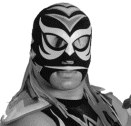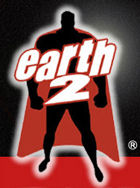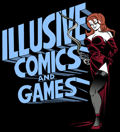| Falls
Count Anywhere
5-16-08
Welcome to Falls Count Anywhere! My name is Chris and BayCon’s busting out all over!
Supercards Continued: The Magical Year of 1985
Last week, I talked about how the Supercards of the late 1970s and early 80s happened and how they worked. The big change was WrestleMania, the first Vince McMahon Jr. show that really showed where things were headed. It changed the WWF forever and it also changed the way these Supercards happened. At the same time, it took a lot of the ideas that promoters had been using for years and tweaked them just enough to make it all seem new.
WrestleMania was held at Madison Square Garden. That was also the location of regular WWF shows. I think at that point they were either monthly or every six weeks. Unlike most of the Supercards that had taken place beforehand, they weren’t upgrading to a bigger arena. They didn’t have to worry about having an empty arena for their show since they’d been selling out with some regularity at the Garden. They had been attracting big name fans, including Andy Warhol who regularly had a seat in the front row for many shows (and when I first saw him sitting in the front row on a video, I was freakin’ stoked!) and they really didn’t need to do much to make it work from the selling seats point of view.
But there was the Closed Circuit thing.
You see, the WWF had contracted for 300 locations so that people could watch the show on large screens. There wasn’t much pay-per-view at that point and fans had gone to the various closed circuit arenas for big shows before, including several WWF shows. The idea to go national and offer these all over the country was a big deal, and a bigger risk. The pre-sales were very weak in some areas, particularly those that had a regular promotion (like Memphis, Florida, Atlanta, etc) and Vince pulled the plug on a lot of those that hadn’t sold many tickets.
The ones that were left were the ones that still had decent sales. That would have been seen as a very bad sign if the internet had been around to report on that. That part was taking what they had one with the early Starrcades and just ramping it up to a new level.
The other idea which was similar to the Starrcade model but in a different direction was bringing in people from the outside. While they brought in folks from all over the NWA, the WWF used their own wrestlers, but brought in outside celebrities to be a part of things. The thing that Starrcade ‘84 had done was bring in Joe Frasier to ref the Main Event between Dusty and Flair. That worked, though I’m betting they would have drawn just as well without him as the ref. Other boxers had reffed matches, dating back to Jack Dempsey in the 1920s, so Vince figured he’d bring in Muhammad Ali to ref the Main Event. That was a good idea, but his issues meant that he couldn’t do the actual ref work so that was left to Pat Patterson.
They brought in Billy Martin to do Ring Announcing for the Main Event while Cindi Lauper managed Wendi Richter. There was Liberace and the Rockettes too, for some reason. The entire thing had a huge celebrity feel to it.
And there was Mr. T, which was one of the biggest reasons the whole thing ended up working. He was a giant star from his time on The A-Team and in movies like D.C. Cab. And Rocky III. They were worried about the Closed Circuit sites not doing good business, but Mr. T, with Hogan at his side, appeared to plug Mania on David Letterman and Saturday Night Live. It was the biggest push for a wrestling show in history. There was a national buzz about wrestling that no one had ever seen before. MTV promoted it, since wrestling was a part of MTV at the time. They also said that they wouldn’t be showing the show on MTV, though several matches were shown over the following weeks.
The major buzz generated by the appearances of the guys in the mainstream media led to a big walk-up business for the closed circuit sites, which draw about 380,000 (though more than one source I’ve seen has put the number much, much higher) and that was enough to make the company able to push harder and constantly improve its position.
WrestleMania was a financial success, and historically was very important. The matches, for the most part, were nothing to comment on. The style of the WWF at that point was still very slow and simple. It would be the arrival of Randy Savage that nearly lifted up the level of competition and make the kinds of matches we remember from the mid-1980s.
The rest of the wrestling world saw all of this and reacted during their Supercards. The first one after WrestleMania was Starcage. There’s not a lot of info that I’ve been able to find about how it drew, but they’d drawn 20,000 plus an additional 5k for closed circuit a year before and I understand that this was considered a success along those lines. The show was a typical big AWA card, no real outside forces around. The AWA understood that they needed to pull a lot of things together to try and compete with Vince McMahon, and so they made a deal with the NWA and put on SuperClash in September of 1985.
The show was stacked with Magnum TA taking on Ric Flair for the NWA title and Stan Hansen and Rick Martel going to a Double Count Out for the AWA title. The Russians came from the NWA and they even pulled in Tsuruta, Giant Baba and Tenryu from All Japan and brought up Mil Mascaras from Mexico. Kerry Von Erich also came from World Class and took on Gorgeous Jimmy Garvin. This was a big card and drew 21,000 people to Comisky Park in Chicago. That was one of the biggest cards that the AWA had ever done.
Mid-South had never done Supercards; instead they treated their Superdome shows as Supercards in a way. They had four or five of them (or in the case of 1983, 7) and in 1985, they had three with an extra that showed Starrcade. The March show was built around a Loser Leaves Town Tuxedo Street Fight Coal Miner's Glove Steel Cage match that Jim Duggan won over Ted DiBiase. The June version also featured Muhammad Ali, which was Bill Watts trying to steal a bit of glory from Vince but really, the show only drew 2000 more than the March one with a stranger show. The August Superdome show featured Flair defending against Butch Reed in a show that I saw and thought was really strong. The show drew 13 thousand too.
World Class was slowly cooling, but they were still doing huge shows all the time. The first Supercard for WCCW in 1985 was in January, but they were really building for the Second Annual Parade of Champions in May at Texas Stadium. The show was headlined by Flair going to a Double Count Out with Kevin Von Erich and Kerry pinning One Man Gang to shave Gary Hart’s head. They also did a two ring twelve man tag match that was really cool. The show drew more than 25,000 and was an excellent show. World Class followed up with up-and-down Star Wars cards, but they did a Cotton Bowl card in October that drew 26,000 and had a great Hair vs. Hair match with Kerry and Kevin Von Erich beating Chris Adams and Gino Hernandez. It was a wonderful match and sadly it was also the last big thing for Gino as he’d OD not much later.
The Florida world was slowly dying, which was a shame. The Battle of the Belts was held on September 2nd, 1985 at the Sundome and managed to draw 7,000. They brought in a few AWA guys, including Nick Bockwinkel and Stan Hansen. The Main Event was Flair defending the NWA belt against Wahoo McDaniel which was a great match. I loved it when I saw it.
The NWA was worried. They saw how huge the wave the WWF was riding and teamed up with the AWA to run shows at the Meadowlands, as close to New York as they could get. The shows did OK to start, but slowly the numbers dwindled. The AWA stuff was good, including Stan Hansen beating Rick Martel for the AWA title in the December 85 show. These didn’t take off like they had hoped and the deal between the two companies failed.
The NWA still had stuff up its sleeve. They built a new Supercard for the summer called The Great American Bash. The show was headlined by Ric Flair vs. Nikita Koloff with Dusty Rhodes winning the TV title from Tully Blanchard in a Steel Cage as well. This was a huge show and drew 27,000, which for a market like Charlotte, Corth Carolina is a big deal. The also had Magnum TA beat Kamala and the Russians go to a Double DQ with the Road Warriors who were pushed as the AWA Tag Champions, though they were mostly full-time NWA stars at the time.
The Starrcade that year was one that really made a ton of money. They had two venues: the Omni in Atlanta and the Greensborough Coliseum. Total gate for both venues was almost a million bucks. They also drew 45,000 to closed circuit venues. It was huge money. The show was headlined by Ric Flair beating Dusty Rhodes, but I’ll always remember it for Magnum TA using the broken chair to dig into Tully’s eye to get the win in the I Quit Cage match. It was a classic, and from a money standpoint, it was probably the height of the Starrcades of the 1980s.
The WWF also ran another Supercard, their first real PPV, with the Wrestling Classic in November. The show was a tourney that was won by Junkyard Dog, but it was Randy Savage that really made an impact, along with the Dynamite Kid and Davey Boy Smith. The show was pretty good and you can see that this was the point where the direction the WWF was going really changed. The production here was great and it really felt like a big deal, even if there weren’t a lot of stars on the show.
A huge year, 1985. Wrestling changed and things were only getting hotter for the bigs and tougher for the littles. If 1985 defined the Supercard as it would exist until the 1990s, it was 1986 that let everyone make a whole lot of money…except for those who made no money!
And that’s where we’ll start next week!
|






